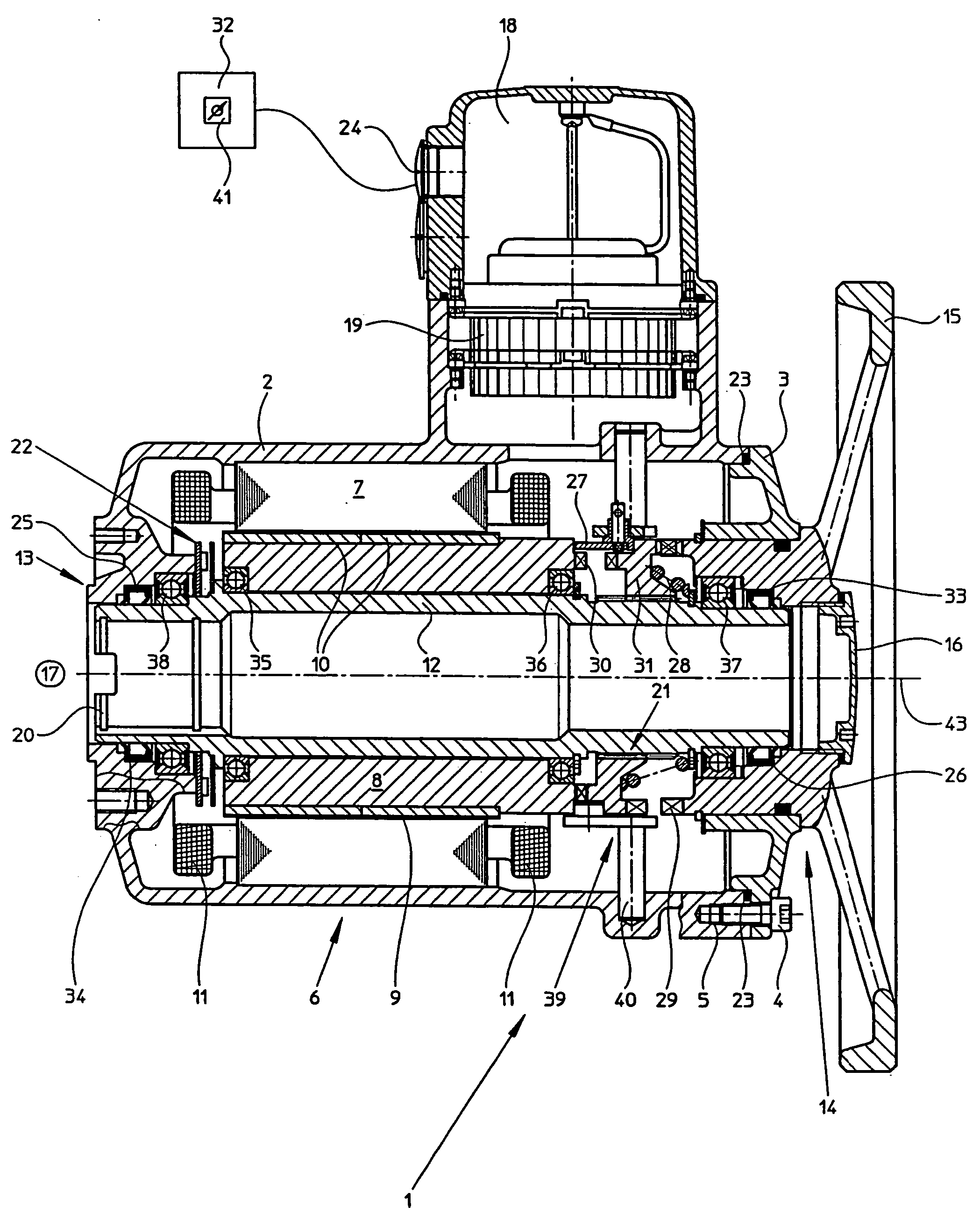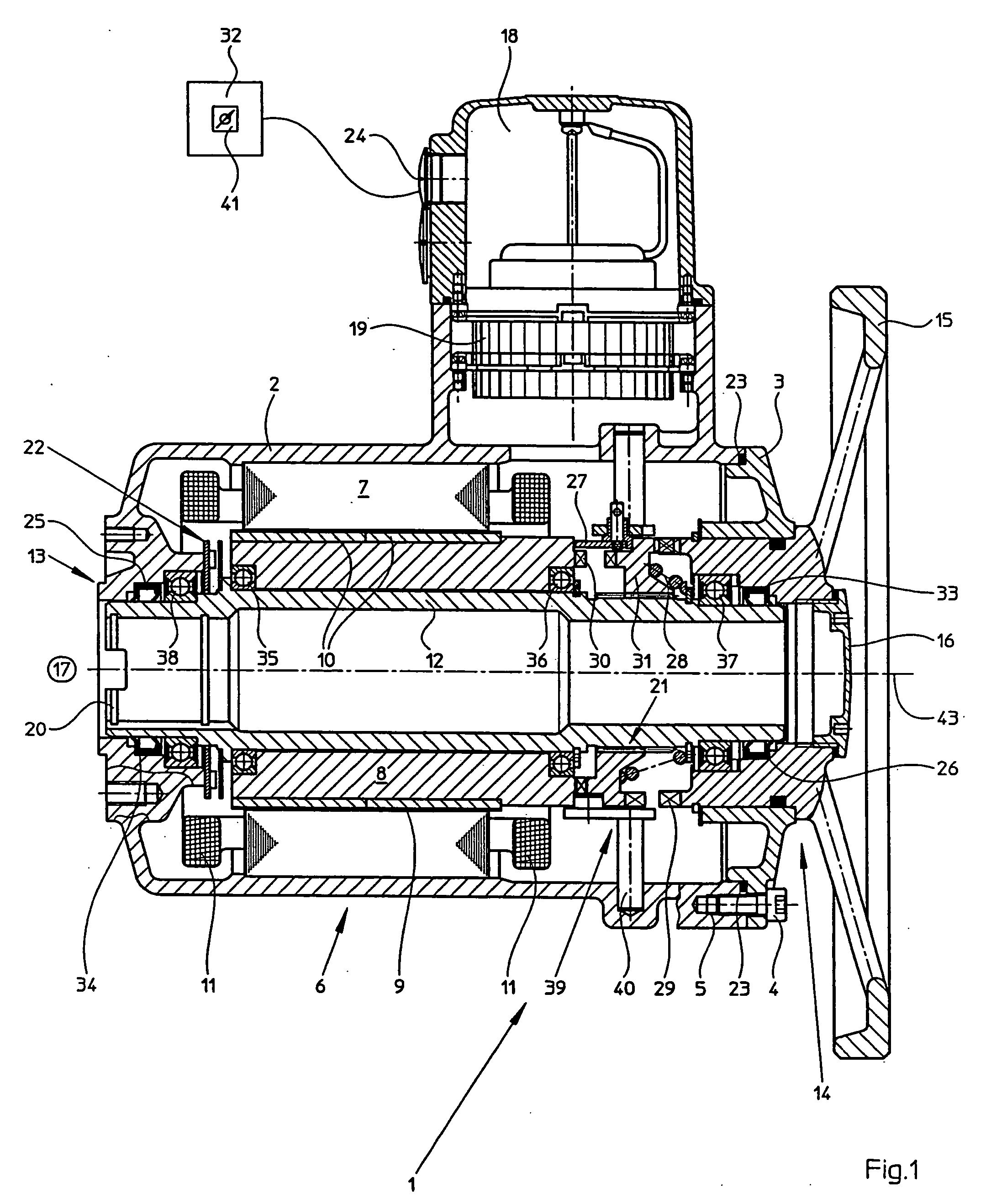Actuator for operating a valve in process automation
- Summary
- Abstract
- Description
- Claims
- Application Information
AI Technical Summary
Benefits of technology
Problems solved by technology
Method used
Image
Examples
Embodiment Construction
[0032]FIG. 1 shows a longitudinal section through a first form of embodiment of the actuator 1 of the invention. The actuator 1 is distinguished by a very compact form of construction. By omitting the reduction transmission, an increased stiffness of the actuator 1 is achieved. As a consequence, the actuator 1 of the invention is suited for highly accurate positioning tasks; additionally, it tolerates high accelerations, which results in a shortened cycle time.
[0033] Essential components of the actuator 1 of the invention are the electric motor 6 and the separately—thus independently of the electric motor 6—operable adjustment wheel 15. The electric motor 6 includes an output shaft 12, a rotor 8 and a stator 7. In the left, first end-region 13 of the output shaft 12, a valve connection 20 is provided for the coupling of the actuator 1 to a valve 17 (shown symbolically in FIG. 1). Valve 17 is preferably a control element, e.g. a globe-, gate-, throttle- or butterfly-valve. The valve...
PUM
 Login to View More
Login to View More Abstract
Description
Claims
Application Information
 Login to View More
Login to View More - R&D
- Intellectual Property
- Life Sciences
- Materials
- Tech Scout
- Unparalleled Data Quality
- Higher Quality Content
- 60% Fewer Hallucinations
Browse by: Latest US Patents, China's latest patents, Technical Efficacy Thesaurus, Application Domain, Technology Topic, Popular Technical Reports.
© 2025 PatSnap. All rights reserved.Legal|Privacy policy|Modern Slavery Act Transparency Statement|Sitemap|About US| Contact US: help@patsnap.com



